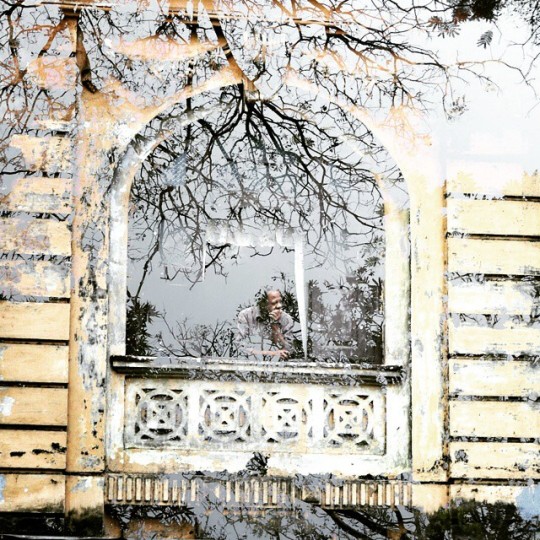Text
Music for me nothing without these bands. In today’s time, my generation really needs to listen to these bands’ songs to realise what real music is. So here is my top favourite classic rock bands from the 60’s, 70’s and 80’s.
1. The Beatles
The Beatles were an English rock band formed in Liverpool in 1960. The members consisted of John Lennon, Paul McCartney, George Harrison and Ringo Starr. They were soon known as the foremost and most influential act of rock era. Rooted in skiffle, beat, and 1950s rock and roll, the Beatles later experimented with several genres, ranging from pop ballads and Indian music to psychedelia and hard rock, often incorporating classical elements in innovative ways. The Beatles produced what many consider their finest material, from 1965 onwards including the innovative and widely influential albums Rubber Soul (1965), Revolver (1966), Sgt. Pepper’s Lonely Hearts Club Band (1967), The Beatles (commonly known as the White Album, 1968) and Abbey Road (1969). According to the RIAA, the Beatles are the best-selling music artists in the United States, with 178 million certified units. They have received ten Grammy Awards, an Academy Award for Best Original Song Score and fifteen Ivor Novello Awards. They were inducted into the Rock and Roll and Roll Hall of Fame in 1988. However, there were a few members that passed away. John Lennon died of assassination in 1980, and George Harrison died of cancer in 2001.
2. Pink Flyod
Pink Floyd were an English progressive rock band formed in London . They achieved international acclaim with their progressive and psychedelic music. The band consisted of 5 members – David Gilmour (Vocals and Guitar), Syd Barrett (Vocals and Guitarist), Nick Mason (Drums), Roger Waters (Vocals and Bass), and Richard Wright (Vocals and Keyboard).
Their critically and commercially successful albums are The Dark Side of the Moon (1973), Wish You Were Here (1975), Animals (1977), The Wall (1979), and The Final Cut (1983). The Dark Side of the Moon is also considered as one of the greatest albums of all time. Pink Floyd were inducted into the Rock and Roll Hall of Fame in 1996.
3. Led Zepplin
Led Zeppelin were an English rock band formed in London in 1968. The group consisted of Robert Plant (Vocal), Jimmy Page (Guitar), John Paul Jones (Bass, Keyboard) and John Bonham (Drums). The band’s heavy, guitar-driven sound, rooted in blues and psychedelia on their early albums, has earned them recognition as one of the progenitors of heavy metal. They achieved significant commercial success with albums such as Led Zeppelin (1969), Led Zeppelin II (1969), Led Zeppelin III (1970), Led Zeppelin IV (1971), Houses of the Holy (1973), and Physical Graffiti (1975). Their song ‘Stairway to Heaven’ is among the most popular and influential rock music of all time.
However in 1980, John Bonham’s death had put an end to the band’s career. However, they have played some reunions in 1985, 1988, 1995, and 2007. And from 2014-2015, they released Deluxe Editions of the albums.
Led Zeppelin are widely considered one of the most successful, innovative, and influential rock groups in history. They are one of the best-selling music artists in the history of audio recording; various sources estimate the group’s record sales at 200 to 300 million units worldwide. With RIAA-certified sales of 111.5 million units, they are the second-best-selling band in the United States. They were inducted into the Rock Hall of Fame in 1995.
4. Guns N Roses
Guns N’ Roses is an American hard rock band from Los Angeles formed in 1985. The classic lineup, as signed to Geffen Records in 1986, consisted of vocalist Axl Rose, lead guitarist Slash, rhythm guitarist Izzy Stradlin, bassist Duff McKagan, and drummer Steven Adler. Apart from hard rock they are also associated with heavy metal.
They are best known for their album ‘Appetite for Destruction’ and songs like ‘Sweet Child O’ Mine’. Guns N’ Roses has been credited with reviving the mainstream popularity of rock music, at a time when popular music was dominated by dance music and glam metal. Its late 1980s and early 1990s years have been described as the period in which the group brought forth a “hedonistic rebelliousness” reminiscent of the early Rolling Stones, a reputation that had earned the group the nickname “the most dangerous band in the world”. The band’s classic lineup, along with later members Reed and drummer Matt Sorum, was inducted into the Rock and Roll Hall of Fame in 2012, in its first year of eligibility.
5. Queen
Queen are an English rock band formed in 1970. Members were Freddie Mercury (Vocals and Piano), Brian May (Guitar, Vocals), Roger Taylor (Drums, Vocals), and John Deacon (Bass Guitar, Vocals). Before forming into Queen, Brian May and Roger Taylor had played together in a band named Smile. Freddie Mercury was a fan of Smile and encouraged them to experiment with more elaborate stage and recording techniques. He then joined the band in 1970, suggested “Queen” as a new band name, and adopted his familiar stage name. John Deacon was also recruited to complete the line-up.
Their release of the album “A Night at the Opera” in 1975, brought them international success. They entered the mainstream with the album’s track “Bohemian Rhapsody”, which stayed at number one in the UK for nine weeks and popularised the music video. Their 1977 album, News of the World, contained “We Will Rock You” and “We Are the Champions”, which also have become anthems at sporting events. In 1991, while embracing their success and their fans, Mercury died of bronchopneumonia, an AIDS-related disease. Deacon then retired and left the band in 1997 . After that, both Brian May and Roger Taylor returned to the state of Smile band, although they kept the “Queen” name.
By the early 1980s, Queen were one of the biggest stadium rock bands in the world. Their performance at 1985’s Live Aid is ranked among the greatest in rock history by various music publications, with a 2005 industry poll ranking it the best. Queen has won an award for “Best Band of the 80s” and has a star in Hollywood. They released more then 16 number one hits and were inducted into the Rock and Roll Hall of Fame in 2001 .
6. AC/DC
AC/DC are a Australian hard rock band, formed in November 1973 by brothers Malcolm and Angus Young, who continued as members until Malcolm’s illness and departure in 2014. They were fronted by Bon Scott until his untimely death due to alcohol poisoning in 1980, after which they hired Brian Johnson to front the band .
Commonly referred to as a hard rock or blues rock band, they are also considered pioneers of heavy metal.
7. Nirvana
Nirvana was an American grunge band that was formed in Aberdeen, Washington in 1987. Nirvana disbanded after Kurt Cobain committed suicide in 1994. The drummer of the band, David Grohl, went on to start the Foo-Fighters, an alternative rock band.
The band was comprised of Kurt Cobain (Vocals, Guitar), Dave Grohl (Drums) and Krist Novoselic (Bass).
Nirvana is most well-known for their album “Nevermind” and their song “Smells Like Teen Spirit”. The band is known for being one of the most popular grunge bands of all time . Together with Soundgarden, Pearl Jam and Alice In Chains, the band is part of the Big 4 of Grunge. Since its debut, the band has sold over 25 million records in the United States alone, and over 75 million records worldwide, making them one of the best-selling bands of all time . Nirvana was inducted into the Rock and Roll Hall of Fame in 2014, in its first year of eligibility.
8. Metallica
Metallica is an American Thrash Metal band formed in 1981 . The original lineup was James Hetfield (Vocalist and Rhythm guitarist), Dave Mustaine (Lead Guitar), Lars Ulrich (Drums), Ron McGovney (Bassist). The group came into mainstream from their Self-Titled album and the hit single “Enter Sandman”.
With their first two albums, Kill ‘Em All and Ride The Lightning reaching underground success, their third effort, Master of Puppets has since become one of the most important heavy metal albums ever, as it became the first thrash metal album to be certified platinum. The title track has since become the band’s most played song live.
On September 27, 1986, bass player Cliff Burton was killed after he was thrown out of the window and crushed to death.
Metallica released their first music video in 1989. The song was One from their 1988 album, …And Justice For All. The song received heavy critical acclaim and has since become their most played song from the album. The album also saw the debut of new bassist, Jason Newsted.
Their fifth album, Metallica (also known as the Black Album), took more of a mainstream approach and has since become one of the best selling albums in America, certified 16x Platinum. The album spawned five singles, Enter Sandman, The Unforgiven, Nothing Else Matters, Wherever I May Roam and Sad But True.
After Load, ReLoad, Jason left the band and the heavily criticised St. Anger featured longtime producer Bob Rock play the bass, although Robert Trujillo would later be handed the job of permanent bass player.
Metallica’s ninth studio album, Death Magnetic received critical acclaim as the band return to their thrash roots from the 80s. Critics have called it the best Metallica album in 20 years. The album also made Metallica become the first band to ever receive five consecutive albums debut at number 1 in the Billboard 200. It was also Robert Trujillo’s debut on a Metallica album. The song, My Apocalypse, won Metallica a Grammy in 2009 for Best Metal Performance.
Metallica’s tenth studio album, Hardwired… to Self-Destruct, would be released worldwide on November 18, 2016 via their independent label, Blackened Recordings. They also unveiled the track listing, album artwork, and released a music video for the album’s first single, “Hardwired” . The album was released as scheduled and debuted at number one on the Billboard 200 .
Metallica is currently on a worldwide tour called “WorldWired Tour” with Avenged Sevenfold and Volbeat.
9. Green Day
Green Day are an American pop punk and alternative rock band formed in East Bay, California in 1987. The members include Billie Joe Armstrong (vocals and guitar), Mike Dirnt (bass), Tré Cool (drums) and Jason White (guitar) . Green Day are associated with punk rock, pop punk and alternative rock. Some of their influences include The Ramones, Sex Pistols, NOFX, Bad Religion etc. They are best known for their songs like ‘Boulevard of Broken Dreams’, ‘Basket Case’ etc and their ‘American Idiot’ & ‘Dookie’ albums. Their album “American Idiot” sold 6 million copies in the U.S. and won a Grammy Award for “Best Rock Album”. Green Day have sold over 75 million records worldwide and have won 5 Grammy Awards. They were inducted into the Rock and Roll Hall of Fame in 2015.
10. The Rolling Stones
The Rolling Stones are an English rock band formed in London in 1962. The first settled line-up consisted of Brian Jones (guitar, harmonica), Ian Stewart (piano), Mick Jagger (lead vocals, harmonica), Keith Richards (guitar), Bill Wyman (bass) and Charlie Watts (drums).
Their best works include songs like Paint it Black, Sympathy for the Devil, Satisfication (Which ranked no. 2 in The Rolling Stones Magazine’s best songs of all time list).
The Rolling Stones were inducted into the Rock and Roll Hall of Fame in 1989, and the UK Music Hall of Fame in 2004. In 2012, the band celebrated its 50th anniversary.
The Legendary Bands
0 notes
Link
0 notes
Text
Wake Me Up When September Ends

Billie Joe was only 10 when he lost his father in the month of September 1982. He locked himself in his room for a whole week and cried his heart out. But when he walked out of that room, he wasn’t a little boy anymore. He was a young man who knew what his father wanted for him. He started his own band with his mate, Mike Dirnt, started performing in small restro where his mother worked as a…
View On WordPress
0 notes
Link
If you're interested to know how the evolution of electronic stores and happened along with electronic products, follow the link to read my blog post.
0 notes
Link
Follow the link to my blog post to know about the journey of Hospitals. (From before Roman Empire until now.)
0 notes
Link
0 notes
Link
Wanna know those fancy Supermarkets came to existence? Click on the link below!
0 notes
Link
Was your school always this updated and equipped? Find out the history of Educational Institutions in India on the link below!
0 notes
Text
The History of Supermarkets
The History of Supermarkets

A supermarket in Sweden in 1941 In the early days of retailing, all products generally were fetched by an assistant from shelves behind the merchant’s counter while customers waited in front of the counter and indicated the items they wanted. Also, most foods and merchandise did not come in individually wrapped consumer-sized packages, so an assistant had to measure out and wrap the precise…
View On WordPress
0 notes
Text
Goenka International School
Classroom of an international school
The first millennium and the few centuries preceding it saw the flourishing of higher education at Nalanda, Takshashila University, Ujjain, & Vikramshila Universities. Amongst the subjects taught were Art, Architecture, Painting, Logic, mathematics, Grammar, Philosophy, Astronomy, Literature, Buddhism, Hinduism, Arthashastra (Economics & Politics), Law, and Medicine. Each university specialized in a particular field of study. Takshila specialized in the study of medicine, while Ujjain laid emphasis on astronomy. Nalanda, being the biggest centre, handled all branches of knowledge, and housed up to 10,000 students at its peak.
Vikramashila Mahavihara, another important center of Buddhist learning in India, was established by King Dharmapala (783 to 820) in response to a supposed decline in the quality of scholarship at Nālandā.
Indigenous education was widespread in India in the 18th century, with a school for every temple, mosque or village in most regions of the country. The subjects taught included Reading, Writing, Arithmetic, Theology, Law, Astronomy, Metaphysics, Ethics, Medical Science and Religion. The schools were attended by students representative of all classes of society.
Outdoor classroom in a village school
Origins of Educational Institutions in India The first millennium and the few centuries preceding it saw the flourishing of higher education at Nalanda, Takshashila University, Ujjain, & Vikramshila Universities.
0 notes
Text
The History of Travel Agencies
The History of Travel Agencies

A travel agency is a private retailer or public service that provides travel and tourism related services to the public on behalf of suppliers such as activities, airlines, car rentals, cruise lines, hotels, railways, travel insurance, and package tours. In addition to dealing with ordinary tourists most travel agencies have a separate department devoted to making travel arrangements for business…
View On WordPress
0 notes
Text
5 Star Hospital
Entrance to the Qawaloon complex which housed the notable Qawaloon hospital.
Resuscitation room bed after a trauma intervention, showing the highly technical equipment of modern hospitals
The church at Les Invalides in Paris, showing the typically close connection between hospitals and the Catholic church
A ward of the hospital at Scutari where Florence Nightingale worked and helped to restructure the modern hospital.
The evolution of the hospital is traced from its onset in ancient Mesopotamia towards the end of the 2nd millennium to the end of the Middle Ages. • Medicine was magical and mythological, and diseases were attributed mostly to the supernatural forces. The foundation of modern medicine can be traced back to ancient Greeks. Priests/doctors were part of the ruling class with great political influences and the temple/hospital was also a meeting place. • In the earliest prehistoric days, a different kind of medicine was practiced in countries such as Egypt, Greece, Rome, Mesopotamia, India, Tibet, China, and others.
MESOPOTAMIAN MEDICINE • Medicine as an organized entity first appeared 6000 years ago in the ancient region of Southwest Asia known as Mesopotamia , between the Tigris and Euphrates rivers, which have their origin in Asia Minor and merge to flow into the Persian Gulf. • The first recorded doctor’s prescription came from Sumer in ancient Babylon under the rule of the dynasty of Hammurabi (1728-1686BC). Hammurabi’s code of law provides the first record of the regulation of doctors ‘practice, as well as the regulation of their fees. • The Mesopotamian civilization made political, educational, and medical contributions to the later development of the Egyptian, Hebrew , Persian and even Indian cultures.
GREEK MEDICINE • The classic period of Greek medicine was the year 460- 136 B.C. • An early leader in Greek medicine was Aesculapius(1200 B.C).Aesculapius bore two daughters- Hygeia and Panacea. Hygeia was worshipped as the goddess of health and Panacea as the goddess of medicine. Hygeia and panacea give rise to curative and preventive medicine. • The temples of Saturn, Hygeia and Aesculapius, the Greek god of medicine all served as both medical schools for practitioners and resting places for patients under observation or treatment.
• Hippocrates(460-370 B.C), the father of medicine, Hippocrates is usually considered the personification of the rational non-religious approach to medicine, and in 480 BC, he started to use auscultation, perform surgical operations and provide historians with detailed records of his patients and descriptions of diseases ranging from tuberculosis to ulcers. • Hippocrates’s lectures and writings, as compiled later by the Alexandrian scholars into the “corpus Hippocraticum.” Hippocrates was an epidemiologist , his concept of health and disease stressed the relation between man and his environment.
• Although patients were treated by magic rituals and cures were related to miracles and divine intervention, the Greek recognized the natural causes of diseases and rational methods of healing were important. • Greeks believed that matter was made up of four elements_ earth, air, fire and water and were represented in the body by the four humors_ phlegm, yellow bile, blood and black bile similar to the “tridosha theory”.
ROMAN MEDICINE • By the first century B.C., the centre of civilization shifted to Rome. • Galen(130-205 A.D), a medical teacher, gave a important contribution in the field of comparative anatomy and experimental physiology. Galen observed the disease is due to three factors- predisposing, exciting and environmental factors. • In Roman times the military and slave hospitals which existed since the 1st century AD, were built for a specialized group and not for the public, and were therefore also not precursors of the modern hospital • Around 370AD St Basil of Caesarea established a religious foundation in Cappadocia that includes a hospital, an isolation unit for those suffering from leprosy and buildings to house the poor, the elderly and the sick.
• St Benedict at Monte Cassino, founded early in the 6th century, where the care of the sick was placed above and before every other Christian duty. • It was from this beginning that one of the first medical schools in Europe ultimately grew at Salerno and was of high repute by the 11th Century. The Roman military hospitals and the few Christian hospitals were no match for the number, organization and excellence of the Arabic hospitals.
CHINESE MEDICINE • Chinese medicine developed as a concept of yin and yang, acupuncture and acupressure, and it has even been used in the modern medicine. • During medieval Europe, major universities and medical schools were established. In the ancient time, before hospitals had developed, patients were treated mostly in temples.
MIDDLE AGES(500 -1500 A.D), “Dark Ages of Medicine” • Developed the Unani system of medicine. • During the time of Mohammed, a real system of hospitals was developed. He was the first to order the establishment of small mobile military Bimaristan (hospital) . • In addition, Islamic physicians were responsible for the establishment of Pharmacy and chemistry as sciences. • the best known of the great hospitals in the middle Ages were in Baghdad, Damascus and Cairo.
• In the early Middle Ages (6th to 10th century), under the influence of the Benedictine Order, an infirmary became an established part of every monastery. During the late Middle Ages (beyond the 10th century) monastic infirmaries continued to expand, but public hospitals were also opened, financed by city authorities, the church and private sources. Specialized institutions, like leper houses, also originated at this time.
• Religion continued to be the dominant influence in the establishment of hospitals during the middle age. • Religious communities ” Monasteries” assumed responsibility for care of the sick . • Yet hospital construction increased in Europe during the middle Ages for two reasons. First, Pope Innocent III in 1198 urged wealthy Christians to build hospitals in every town and second, increased revenues were available from the commerce with the crusaders. • The oldest hospital still in existence are the “Hotel –Dieu” in Lyons and Paris, France.
• Military hospitals came into being along the traveled routes: the knights Hospitalers of the Order of St John in 1099 established in the Holy Land, a hospital that could care for some 200 patients. • It is to the Christians that one must turn for the origin of the modern hospital. Hospices, initially built to shelter pilgrims and messengers between various bishops, were under Christian control developed into hospitals in the modern sense of the word.
Renaissance Age: • The renaissance period lasted from the fourteenth to the sixteenth centuries. • The gradual transfer of responsibility for institutional healthcare from the church to civil authorities continued in Europe after the dissolution of the monasteries in 1540 by Henry VIII, which put an end to hospital building in England for some 200 years. • Only the powerful hospitals in London survived when the citizens petitioned the King to endow St Bartholomew, St Thomas and St Mary of Bethlehem hospitals.
• The loss of monastic hospitals in England caused the secular authorities to provide for the sick, the injured and the handicapped, thus laying the foundation for the voluntary hospital movement. • . The first voluntary hospital in England was probably established in 1718 by Huguenots from France and was closely followed by the foundation of such London hospitals as the Westminster hospital in 1719,Guy’s hospital in 1724 and the London Hospital in 1740. • In 1506, the Royal College of Surgeons was organized in England, followed by organization of the Royal College of Physicians in 1528.
• The major contribution of the Renaissance to the development of hospitals was in improved management of the hospital, the return to the segregation of patients by disease, and the higher quality of medicine provided within the hospital. Royal Victoria Hospital
INDIAN MEDICINE • The Indian medicine system development are Ayurveda and Siddha system . Dhanvantari was considered as “the Hindu god of medicine”. • The celebrated authorities in Ayurvedic medicine were Atreya, charaka, Susruta and Vaghbhatt. • Atreya(800)- is the first Indian physician and teacher lived in ancient university of Takshashila. • Charaka(200A.D)- compiled his famous treatise on medicine the “Charaka samhita” • Susruta( father of surgery)- compiled the surgical knowledge of his classic “susruta samhita”. • Ayurveda is a “Tridosha theory of disease” The doshas are: vata(wind), pitta( gall) and kalpa( mucus).
INDIAN MEDICINE • Historical records show that efficient hospitals were constructed in India by 600 BC . • During the splendid reign of King Asoka (273-232 BC), Indian hospitals started to look like modern hospitals. They followed principles of sanitation and cesarean sections were performed with close attention to technique in order to save both mother and child. • Physicians were appointed –one for every ten villages-to serve the health care needs of the populations and regional hospitals for the infirm and destitute were built by Buddha.
HOSPITAL IN INDIA • The Indian medicine begins to decline from the Mohammedan invasions in the tenth century. • During Akbar’s period the Unani medicine system spread all the way through the greater part of India.. • During his period, there were a good number of government hospitals, as well as private clinics run by many physicians. • The modern system of medicine in India was introduced in the 17th centaury with the arrival of Christian missionaries in South India. • In the 17th centaury, British empire established first hospital at Chennai in 1664.
• Organized medical training was started with the first medical college opening in Calcutta in 1835, two in Delhi in 1835 and 1836, followed by Mumbai in 1845 and Chennai in 1850. • The oldest college of Asia was established in Calcutta on JAN 28 1835 followed by Madras Medical College . • MPUH i.e. Muljibhai Patel Urological Hospital, Nadiad (Gujarat/India), popularly known as Nadiad Kidney Hospital, is the first hospital in Gujarat to have da Vinci Si Robot for robotic-assisted surgeries. • AIIMS is established in 1956 which is leading hospital in India in 21st centaury.
The History of Hospitals The evolution of the hospital is traced from its onset in ancient Mesopotamia towards the end of the 2nd millennium to the end of the Middle Ages.
0 notes
Link
Part 2 of my previous blog post about Got Season 8 predictions.
0 notes
Link
Hey GoT fam! Can’t wait for finale Season (8) already but hate to wait for 2 more years? Here are some predictions about Game Of Thrones (Season - 8).
P.S. - These are just predictions, not actual story lines.
Valar Morghulis ✌🏻
0 notes
Photo

FROM #InstaWalkMazgaon series - 2. Free Spirit 🎈 #typographyindia #typography #vscocam #rising_masters #canon_official #madewithOver #mumbai_igers @over
#rising_masters#madewithover#typographyindia#typography#instawalkmazgaon#mumbai_igers#canon_official#vscocam
1 note
·
View note
Photo

From Typography Series - |Love is like an Oven, you've to Drown in it to feel it's Intensity| #typographyindia #typography #vscocam #rising_masters #canon_official #madewithOver @over #LongExposure
1 note
·
View note
